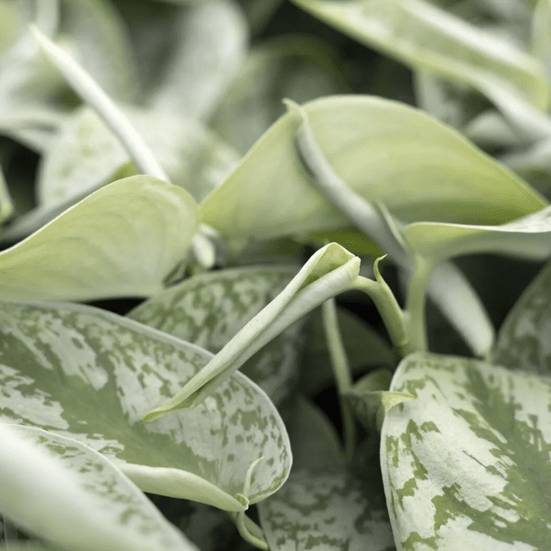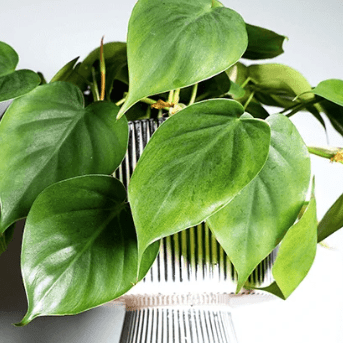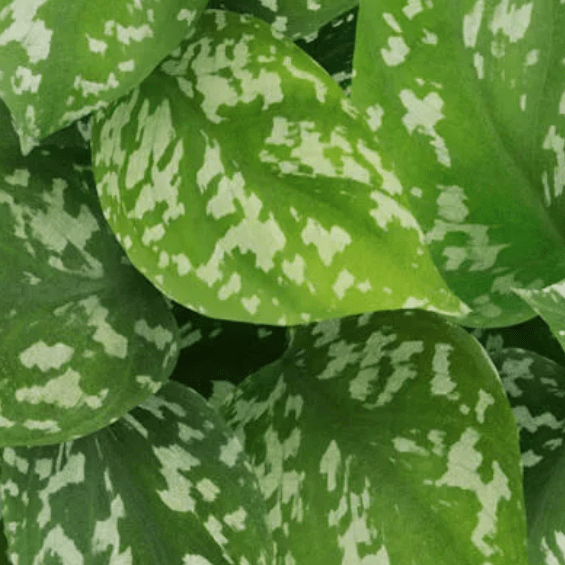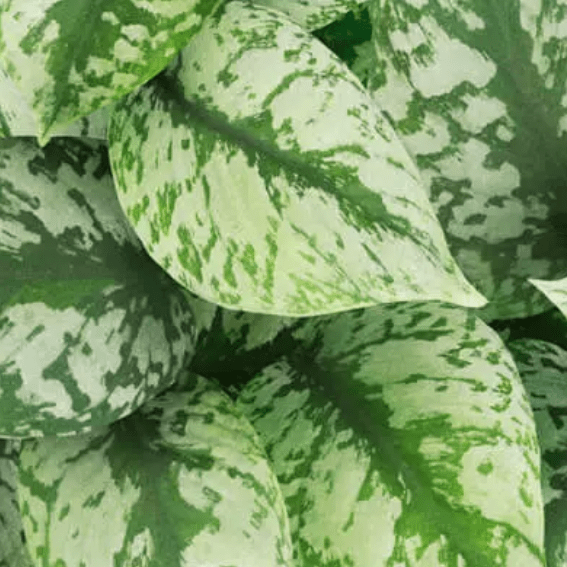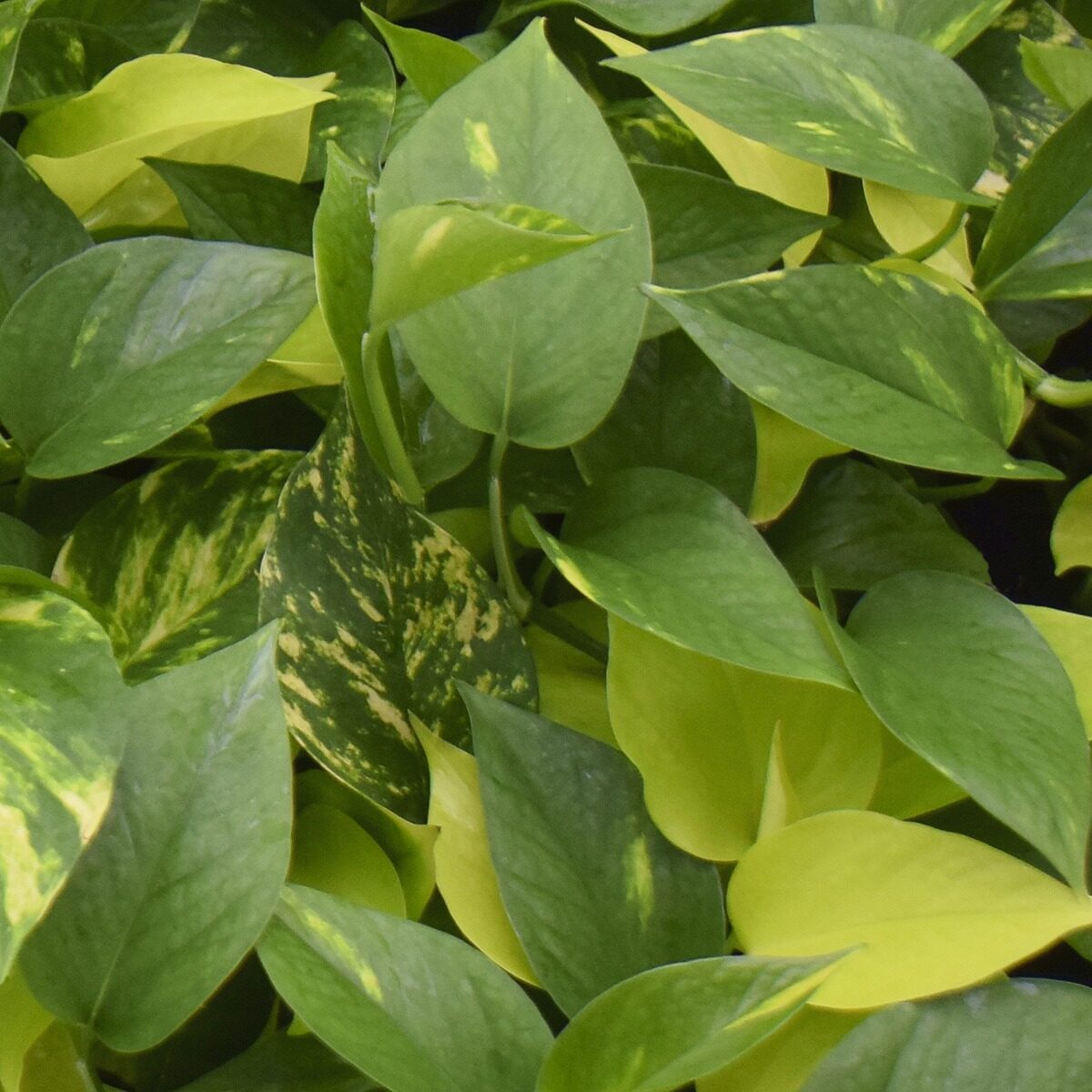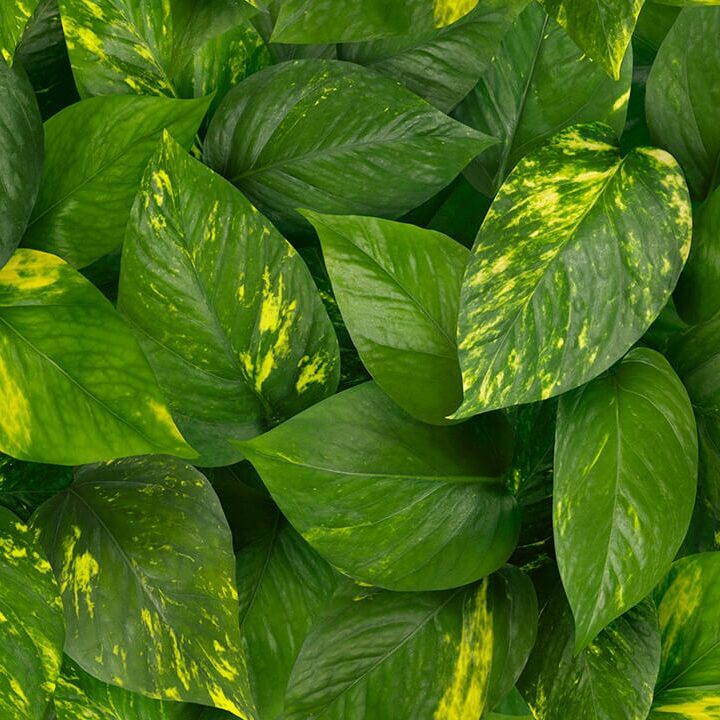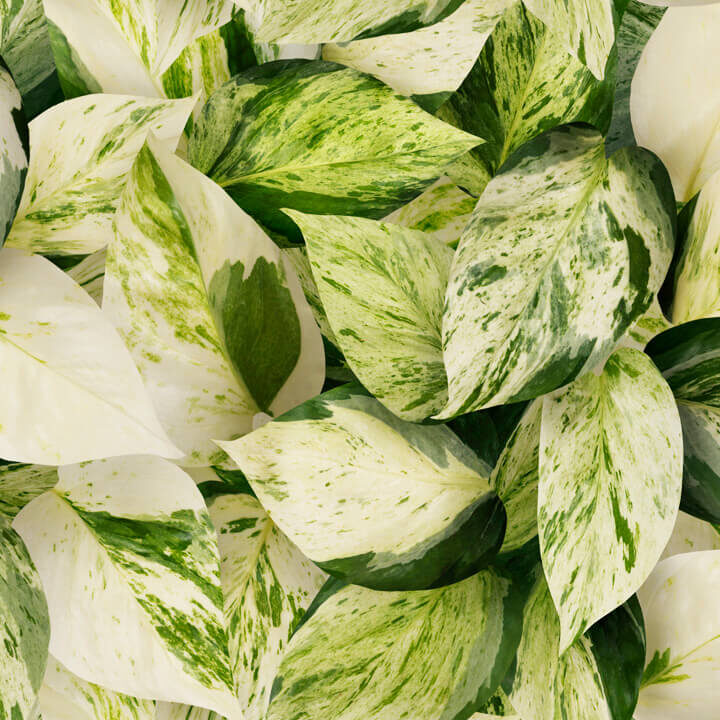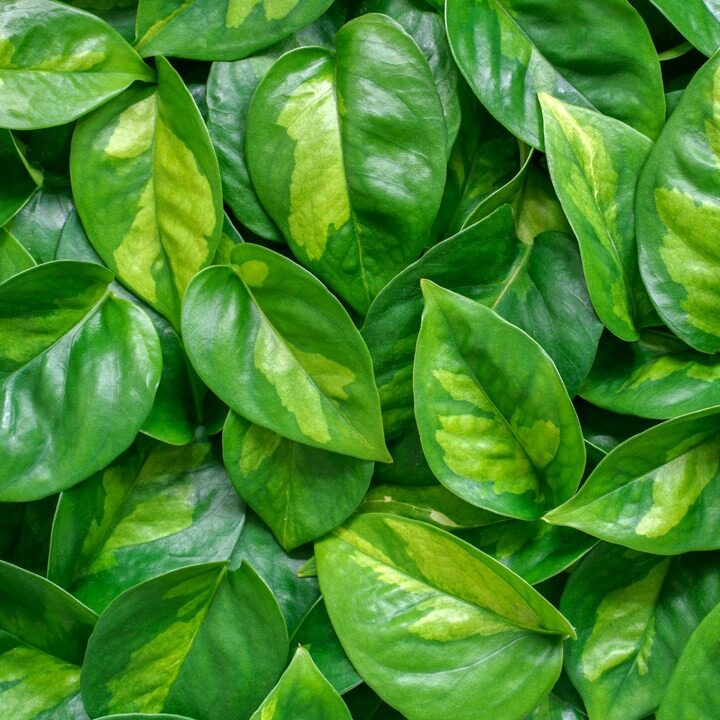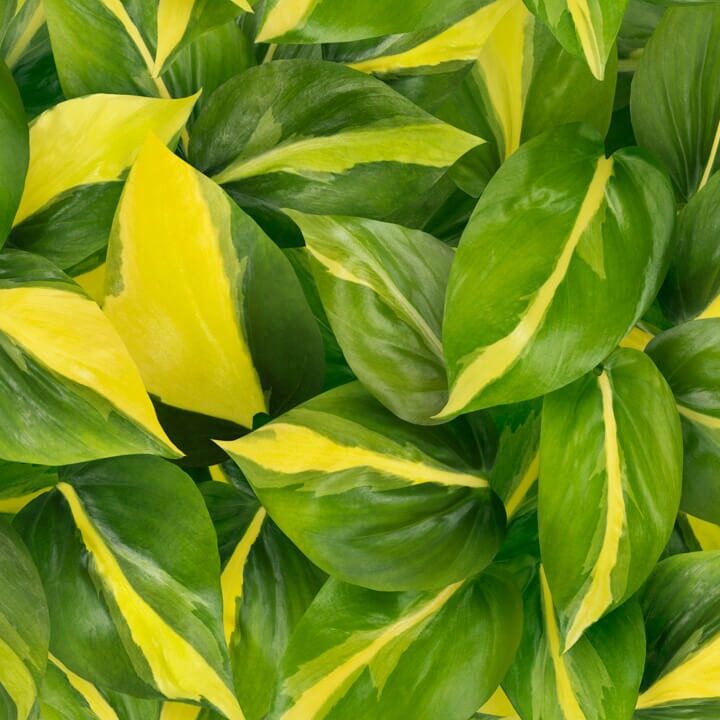There’s no doubt about it: white is THE fashionable colour in the Epipremnum collection! Finally, a variant that combines traditional green with bright white. The youngest sprout in the Sentinel family is a real eye-catcher. Add a little colour to your own home or office collection… with white!
The Happy Leaf is a great houseplant whose leaves are adorned primarily with white. You may find that this plant resembles the ‘Marble Queen’. This stands to reason, since these two are relatives. The Happy Leaf originally comes from the forests of Asia where this plant grows upwards along the high trees. The leaves can become very large and we therefore recommend it be kept at home as a hanging plant.
Did you know that this plant is a relatively new variety? It was discovered not too long ago as a mutant variety in a nursery. And we’re quite happy about it!
In addition to the beautiful, white markings on the leaves of the Happy Leaf, the plant also has powerful air-purifying qualities. It removes substances such as formaldehyde and benzene. These are substances that occur in every household, as well as in office spaces. The Happy Leaf likes to absorb these substances, and is therefore much appreciated as a houseplant, as it contributes to our health. Absorption of these substances occurs by means of tiny stomata in the leaves that absorb food and oxygen in addition to harmful substances. Once the plant has absorbed these substances, millions of microorganisms break down these harmful gases. No waste is released during this process. A win-win situation.
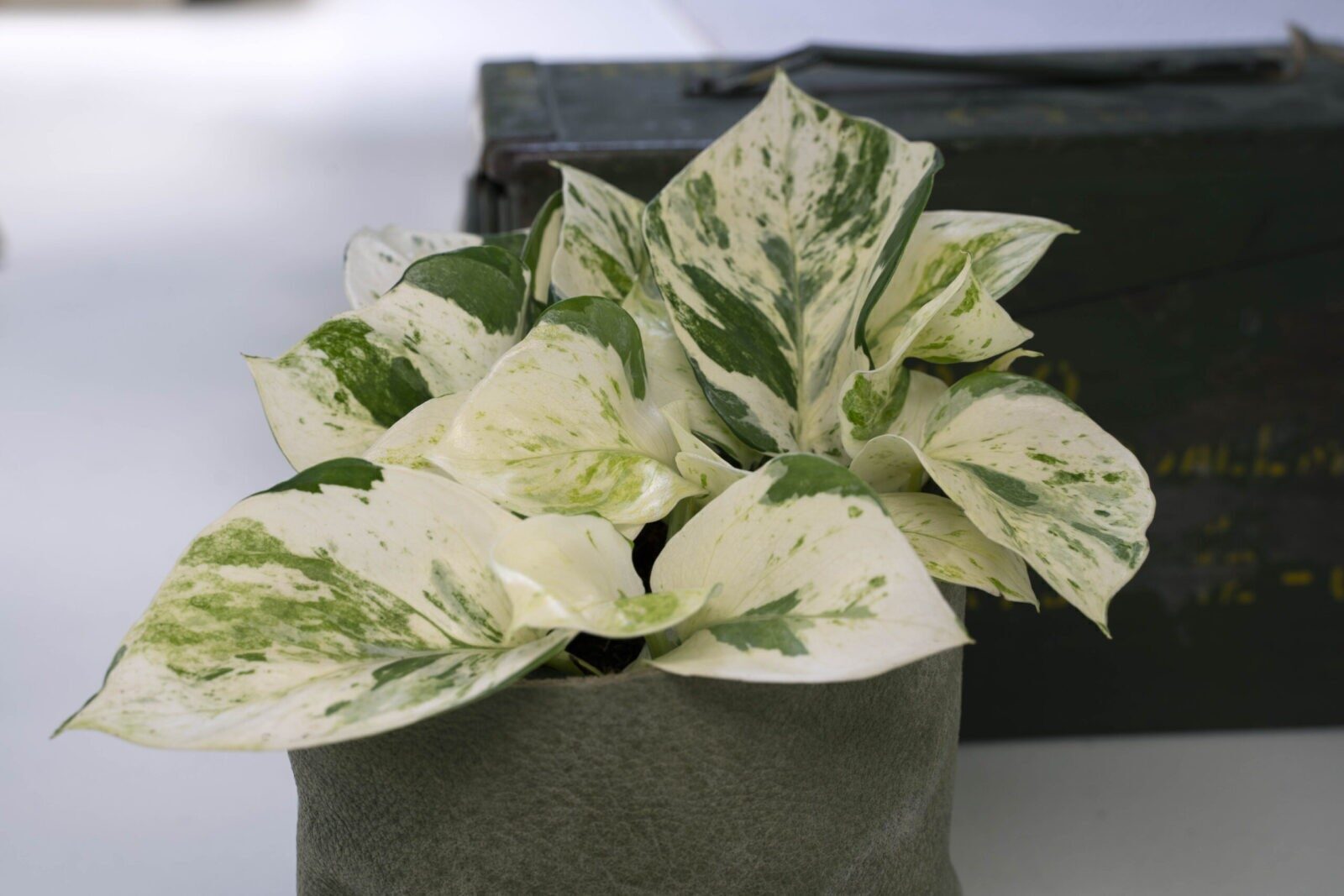
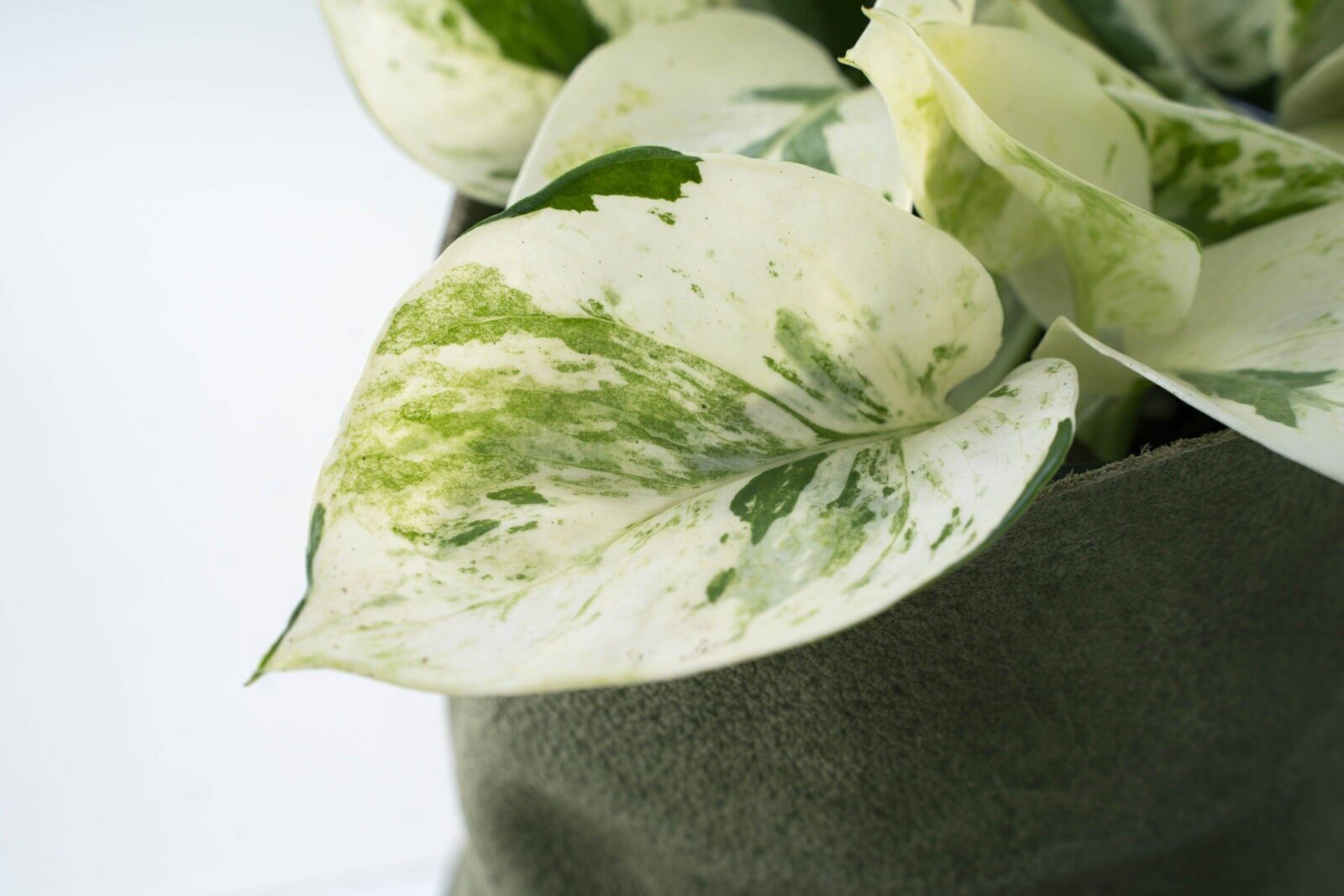
The Happy Leaf is a low-maintenance plant. It really doesn’t need much: a little water, a little light and a whole lot of love. When you purchase a Happy Leaf, we recommend you check right away to ensure that the soil is moist enough, though not too moist. Stick your fingers into the soil, two knuckles deep, and see if the soil feels a little damp. If this is the case, then your plant has enough water and you don’t need to add any more. Of course, the Happy Leaf's water requirements may vary. This will depend on factors including the environment, air humidity, the temperature, the season as well as the size of the plant. During the winter, while the plant is in a dormancy period, it goes without saying that you should give it less water than during the summer, and if the plant gets too big, you can trim it.
Happy Leaf: the white lady
While the Happy Leaf is also known as the Epipremnum Aureum or Devil’s Ivy, it takes its place in the Sentinel collection as the White Lady. This is a true lady with beautiful leaves whose lady-like qualities merit enumeration.
